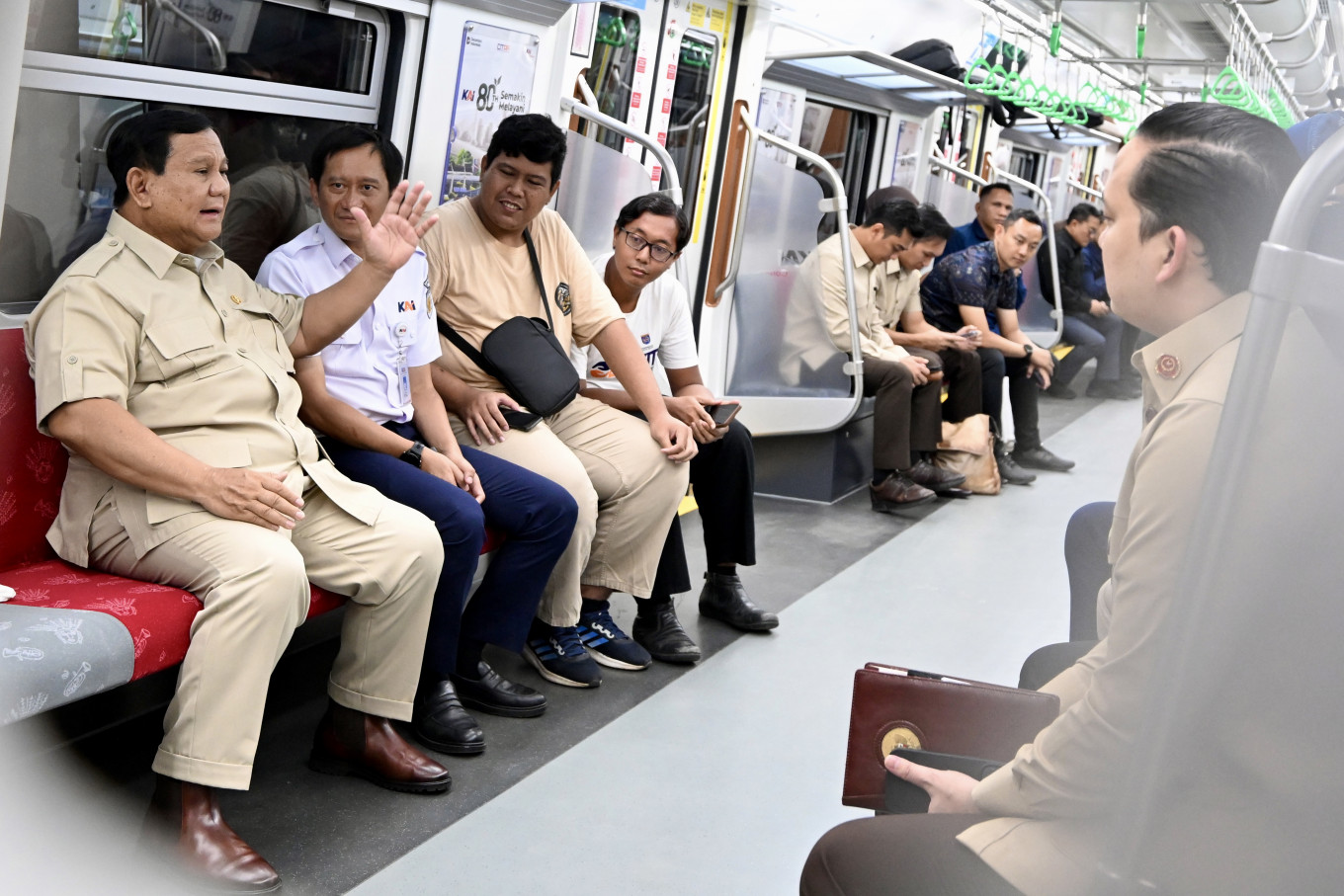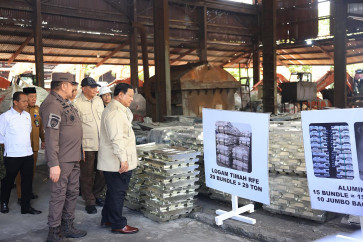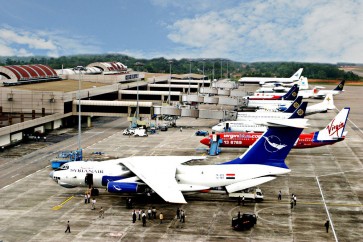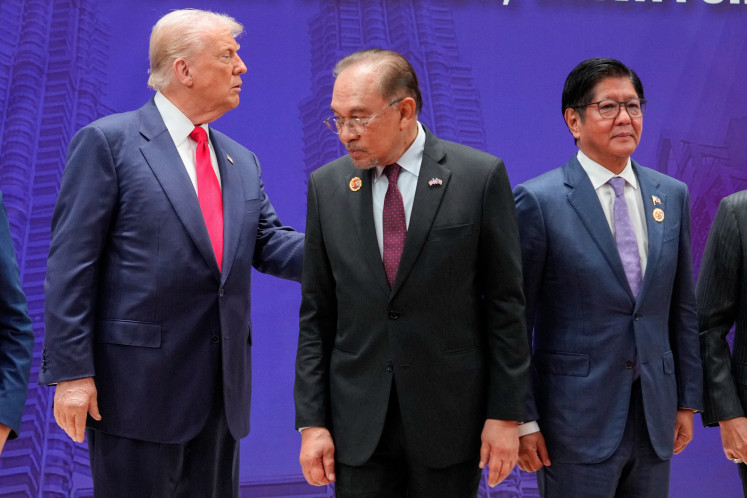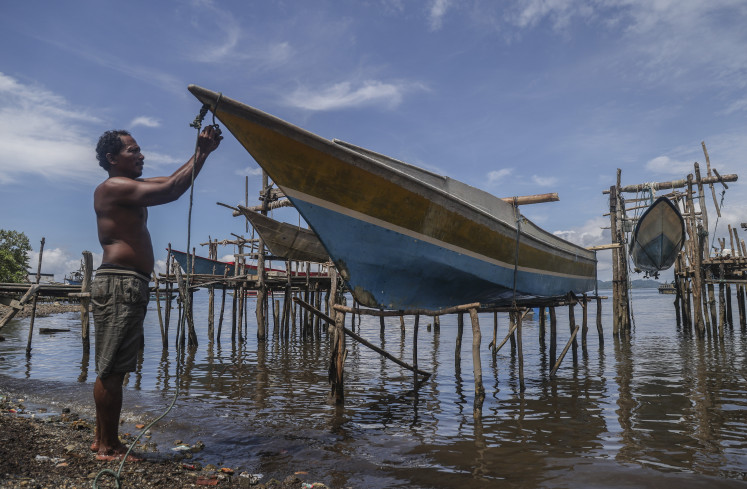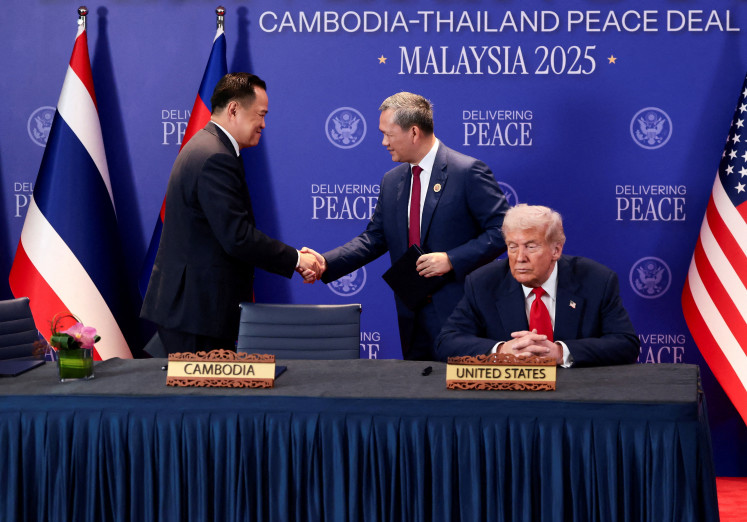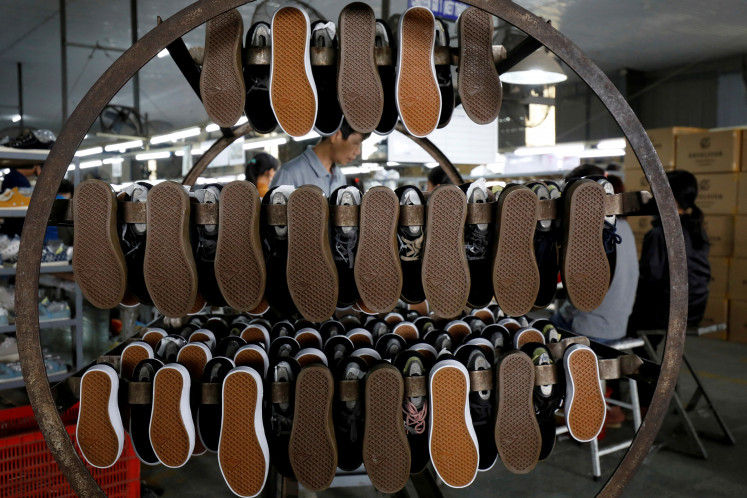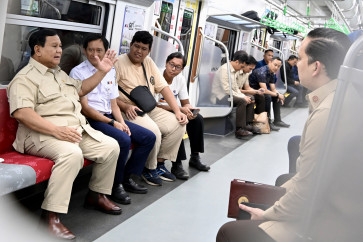Popular Reads
Top Results
Can't find what you're looking for?
View all search resultsPopular Reads
Top Results
Can't find what you're looking for?
View all search resultsIndonesia’s economy is failing to engage with the world
Prabowo’s strategy must prioritize economic openness.
Change text size
Gift Premium Articles
to Anyone
A
s President Prabowo Subianto’s one-year anniversary in office comes and goes, reflecting on the ambition of his government is natural. The President vehemently committed himself to an 8 percent growth target going into the election. Instead, signs of economic distress are mounting. There is not much to celebrate. The country must look beyond its own borders or risk failing to live up to its potential.
The economy’s performance is under scrutiny as recent figures of 5 percent GDP growth are openly questioned as unrealistic given Indonesia’s weakening consumption and shrinking middle class. The government responded with two stimulus packages in June and September in recognition of a weakening economy. But it was not enough. Rising layoffs, concentrated in manufacturing, and growing informality in the labor market have fed discontent, which saw protests erupt in late August as economic hardship coalesced with perceptions of repression and government graft.
The new Finance Minister Purbaya Yudhi Sadewa succeeded the technocratic mainstay Sri Mulyani after her ousting in the aftermath of the protests. Dubbed the “cowboy” minister, Purbaya is clearly ambitious. Increases to government spending and money supply to revive the economy have helped Indonesia’s stock market reach record highs. But the government’s economic policies remain distinctly inward looking, focused on national food security, domestic resource extraction and supporting consumption.
Lifting the incomes of the 68 percent of the population living below the US$8.30 purchasing power parity poverty line for upper-middle-income countries requires more. The World Bank identified the lack of middle class job creation and stagnating real wages as a constraint on growth, related to declining productivity and the country’s “reliance on extractive industries”.
The country needs a boost to productivity.
One major barrier is the protectionist tendencies that limit the country’s integration with global supply chains and the growth and productivity opportunities they bring. Without exposing domestic firms to the dynamic ecosystem of inputs, technologies and capital goods available globally, their competitiveness suffers. Indonesia’s exports are only 19 percent of the economy and are largely concentrated in commodities. Southeast Asia averages well over 50 percent, with standouts like Vietnam and Malaysia at 85 percent and 78 percent, respectively. Indonesia’s capital goods imports, inherently growth-supporting, were only $5.7 billion in 2023, that is 14 percent of Southeast Asia despite Indonesia accounting for around half the region’s economy.
It is no surprise then that Indonesia experienced the sharpest decline in the region of manufacturing’s relative importance to the economy. High frequency manufacturing indices are negative and business confidence has fallen to its lowest level since records began. In key supply chain sectors such as electronics, machinery and textiles, Indonesia is increasingly importing much more than it exports. Only trade in base metals has bucked this trend. Indonesia was one of the last economies in Southeast Asia to attract Chinese solar panel manufacturers, equal with Laos and ahead of only Myanmar and Brunei. The textiles' industry is even losing out to Cambodia and Bangladesh, Indonesia’s industrial competitiveness is in dire straits.

